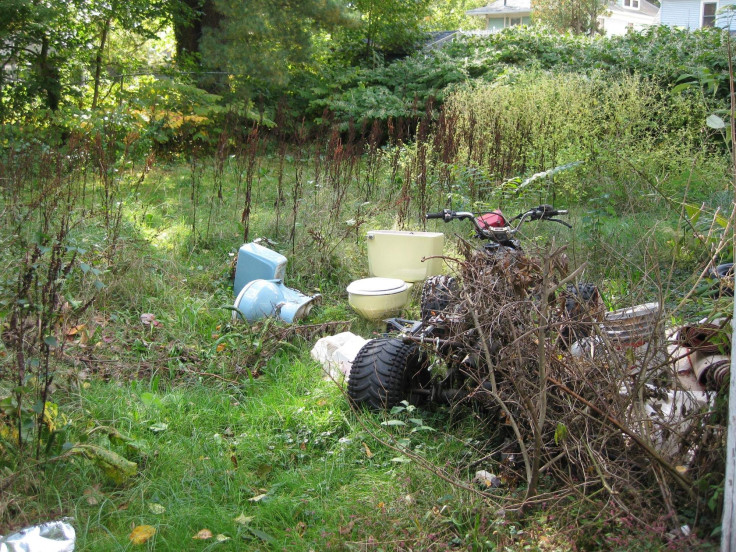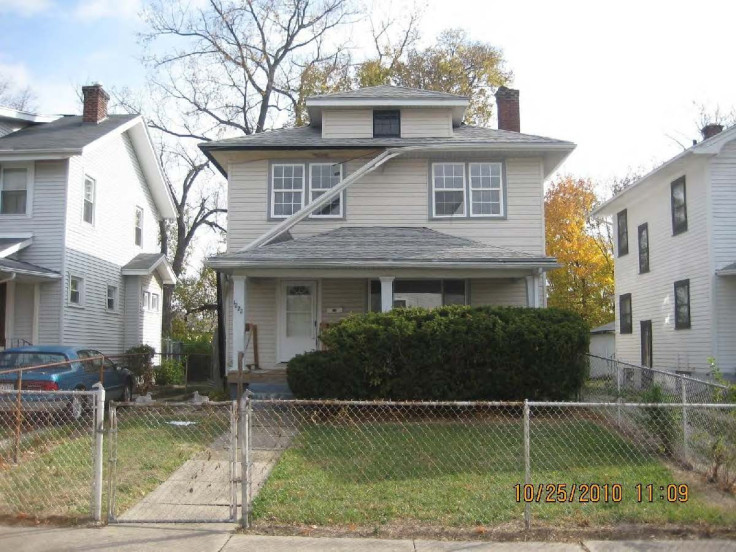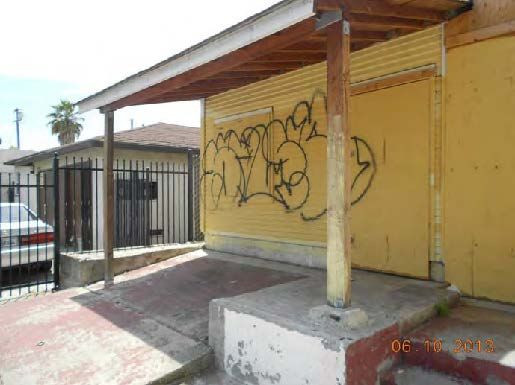Fannie Mae Fails To Maintain Foreclosed Homes In Black And Latino Neighborhoods, Discrimination Complaint Alleges

In the photo of the sun-streaked backyard of a foreclosed home in Hartford, Connecticut, two toilets -- one yellow, one blue -- sit among tall weeds and grasses. An ATV with thick black tires, a bucket and other debris pokes out from beneath a pile of branches. Two neighboring houses stand at the edge of the frame.
“Imagine that is the view your child has from their bedroom window,” said Keenya Robertson, president and CEO of the Housing Opportunities Project for Excellence, in Miami.
Unkempt properties like the one in Hartford are a problem all across the country in African-American and Latino communities, where foreclosures hit hard during the housing crisis, and a messy aftermath persists: empty homes with boarded-up windows and broken fences, their yards strewn with trash, and even the occasional dead animal carcass.
A host of fair housing and civil rights groups say Fannie Mae, as an owner of foreclosed homes, is perpetuating a pattern of discrimination, by allowing properties to fall into a state of disrepair in communities of color, while successfully maintaining homes in white neighborhoods. On Wednesday, the National Fair Housing Alliance (NHFA) and 19 housing organizations from around the country filed a complaint against Fannie Mae with the Department of Housing and Urban Development, alleging multiple and ongoing violations of the Fair Housing Act.

The violations, according to the complaint, depress housing values in communities of color, contribute to health problems in those neighborhoods and perpetuate racial segregation in the housing market. The NFHA has similar, pending complaints against Bank of America, U.S. Bank and Deutsche Bank over the maintenance of foreclosed homes, also known as “Real Estate Owned,” or REO, properties.
“Particularly for communities of color, wealth is tied to homeownership and home equity, and both those things have been negatively impacted by both the foreclosure crisis and the poor maintenance of REO units,” said Lisa Rice, executive vice president of the NFHA.
Fannie Mae denies the allegations. "We strongly disagree with these allegations and firmly believe they have no merit," spokesperson Andrew Wilson said in an emailed statement. "We are confident that our standards ensure that properties in all neighborhoods are treated equally, and we perform rigorous quality control to make sure that is the case. We remain dedicated to neighborhood stabilization efforts across the nation, including with respect to our maintenance of foreclosed properties."
The NFHA led a five-year investigation of 2,106 foreclosed properties owned by Fannie Mae in 34 metropolitan regions across the U.S., its investigators armed with a checklist of 39 maintenance items. They examined the properties with an eye toward curb appeal, health and safety issues and structural problems with the home.
The presence of any broken or boarded windows, for example, counted as one deficiency, and the investigators documented “significant racial disparities in many of the objective factors evaluated,” according to the complaint.

Whereas 49.5 percent of Fannie Mae’s foreclosed homes in white communities had fewer than five deficiencies, “only 24.4 percent of the REO properties in communities of color had fewer than 5 deficiencies,” the complaint says.
In communities of color, 22.1 percent of the Fannie Mae REOs exhibited 10 or more deficiencies on the checklist. Only 8 percent of properties in white communities had that many problems.
Over the years, investigators snapped photos of what they encountered, which wasn’t just limited to broken windows and graffiti-covered walls but also included traces of animals, such as a fossilized rat skeleton at a property in Orlando, Florida, in 2014, and a dead groundhog at a Bloomfield, Connecticut, property in 2013. That year, they also found a sick kitten underneath a house in Memphis, Tennesee (it was taken to a shelter by a PETA volunteer).

The photos speak to health concerns in those neighborhoods, as well as the overall attractiveness of the properties to potential homebuyers, the housing groups said.
For example, in a 2012 study of neighborhoods in the Washington metro area, the NFHA found that where foreclosed homes were well maintained, 46 percent were purchased by owners who moved into the home, and 36 percent were purchased by an investor. But among poorly maintained REOs, just 12 percent were bought by owner-occupants, and 59 percent were purchased by investors.
The state of disrepair makes for an "uneven recovery" from the foreclosure crisis, said Anne Houghtaling, executive director of the HOPE Fair Housing Center in the Chicago area.
The neighbors who live near eyesores see the value of their homes dragged down, which can make it more difficult to refinance at a lower interest rate or obtain a home equity loan. They "deserve to have their properties fairly and equally treated," Houghtaling said.
© Copyright IBTimes 2024. All rights reserved.





















